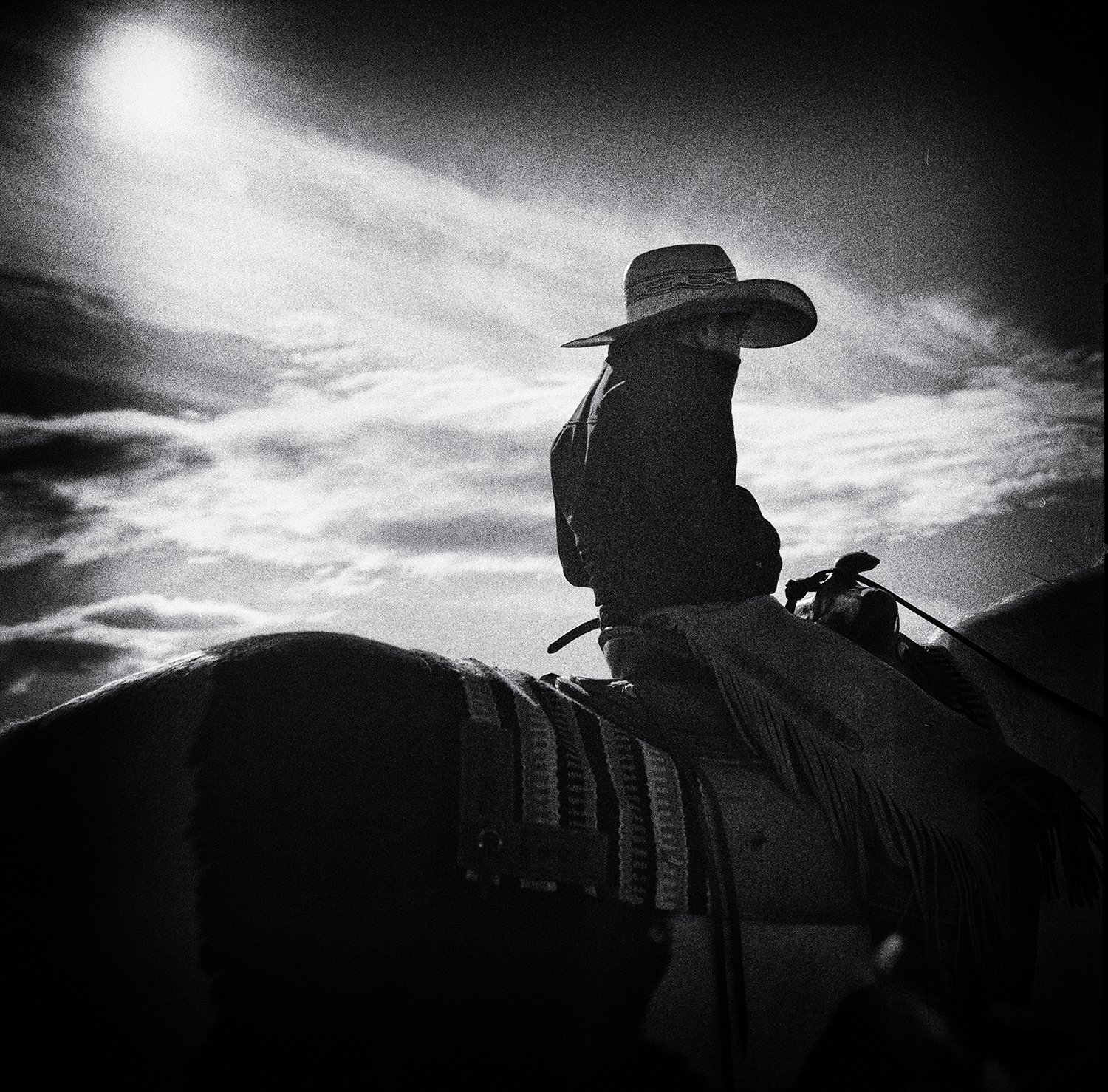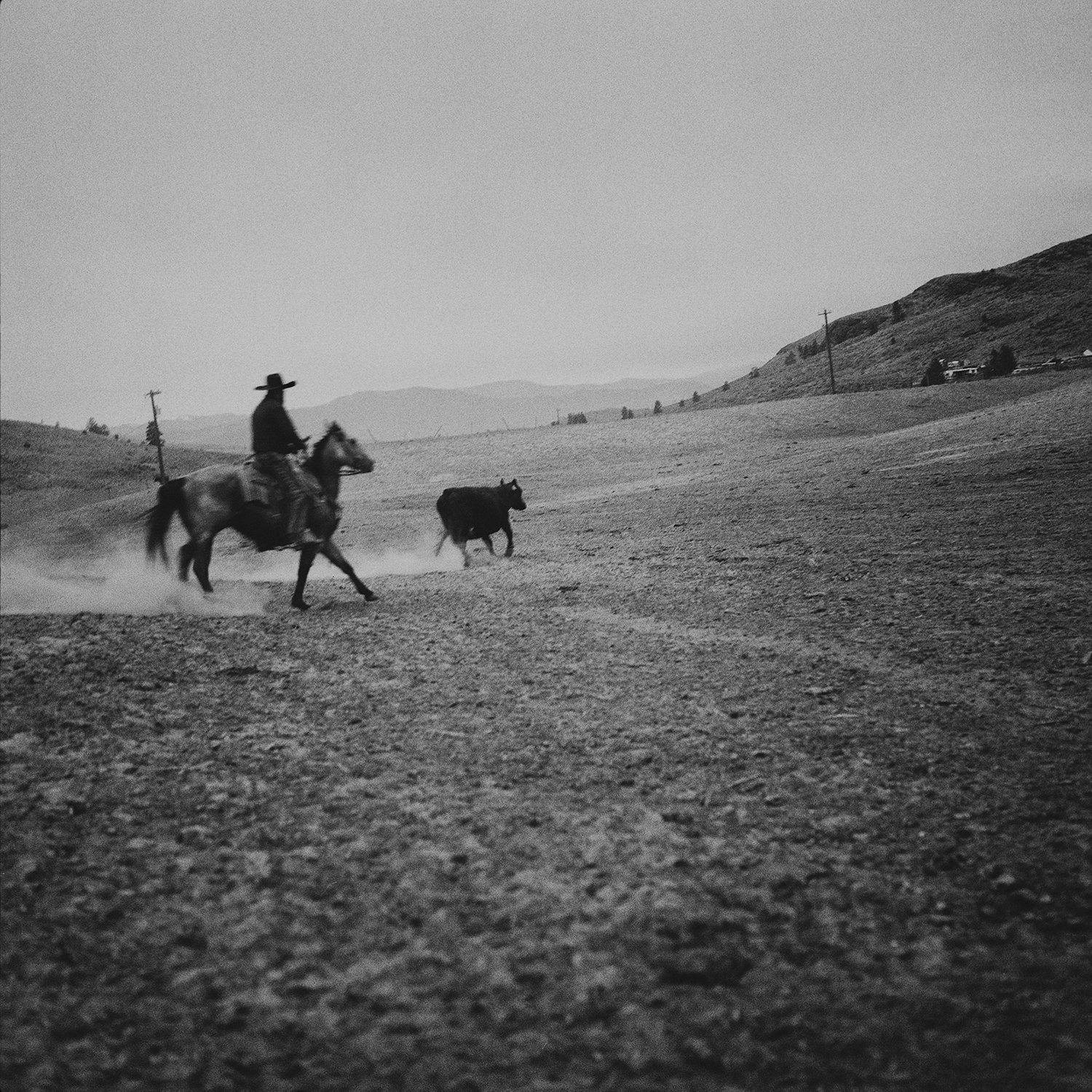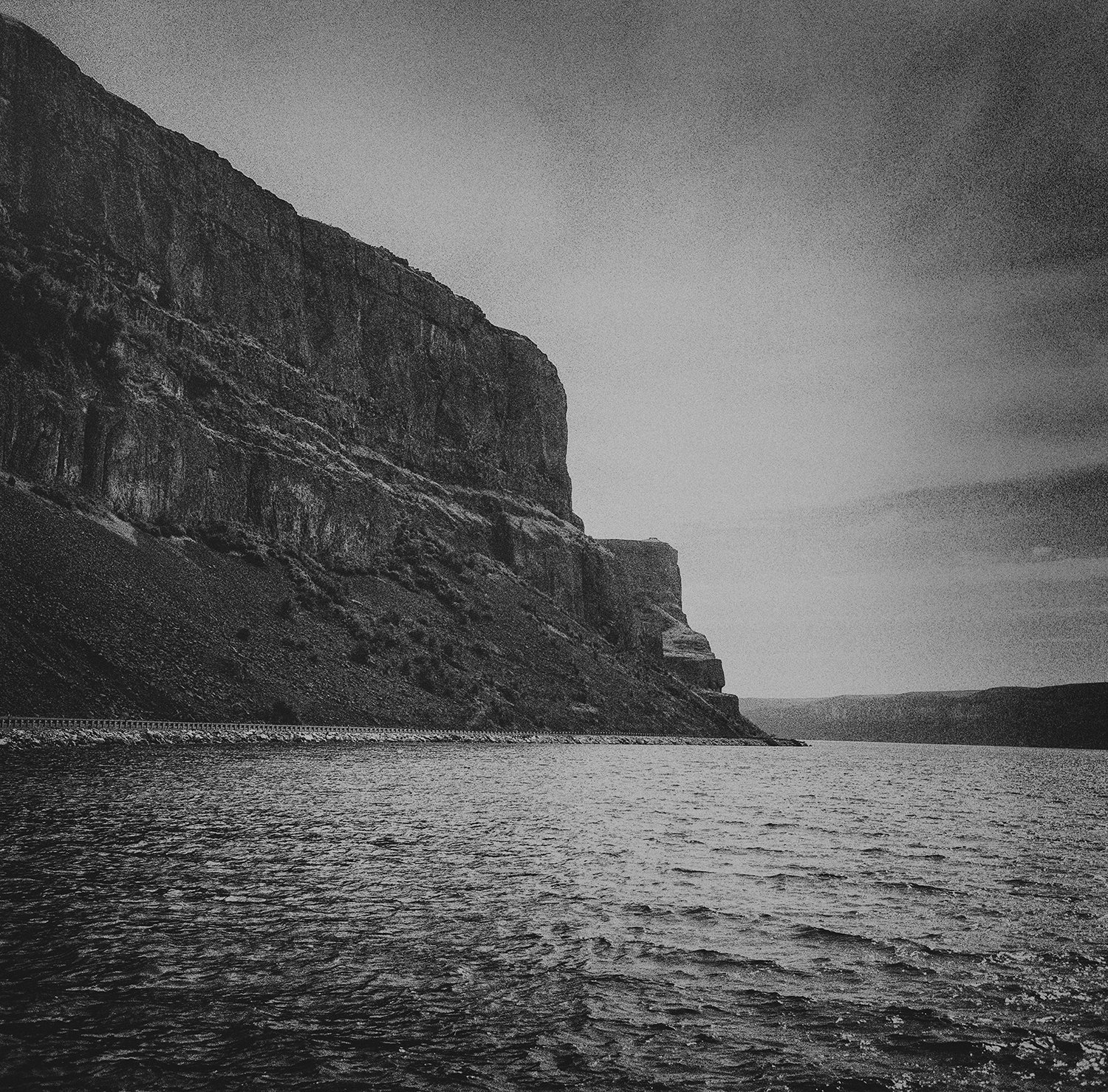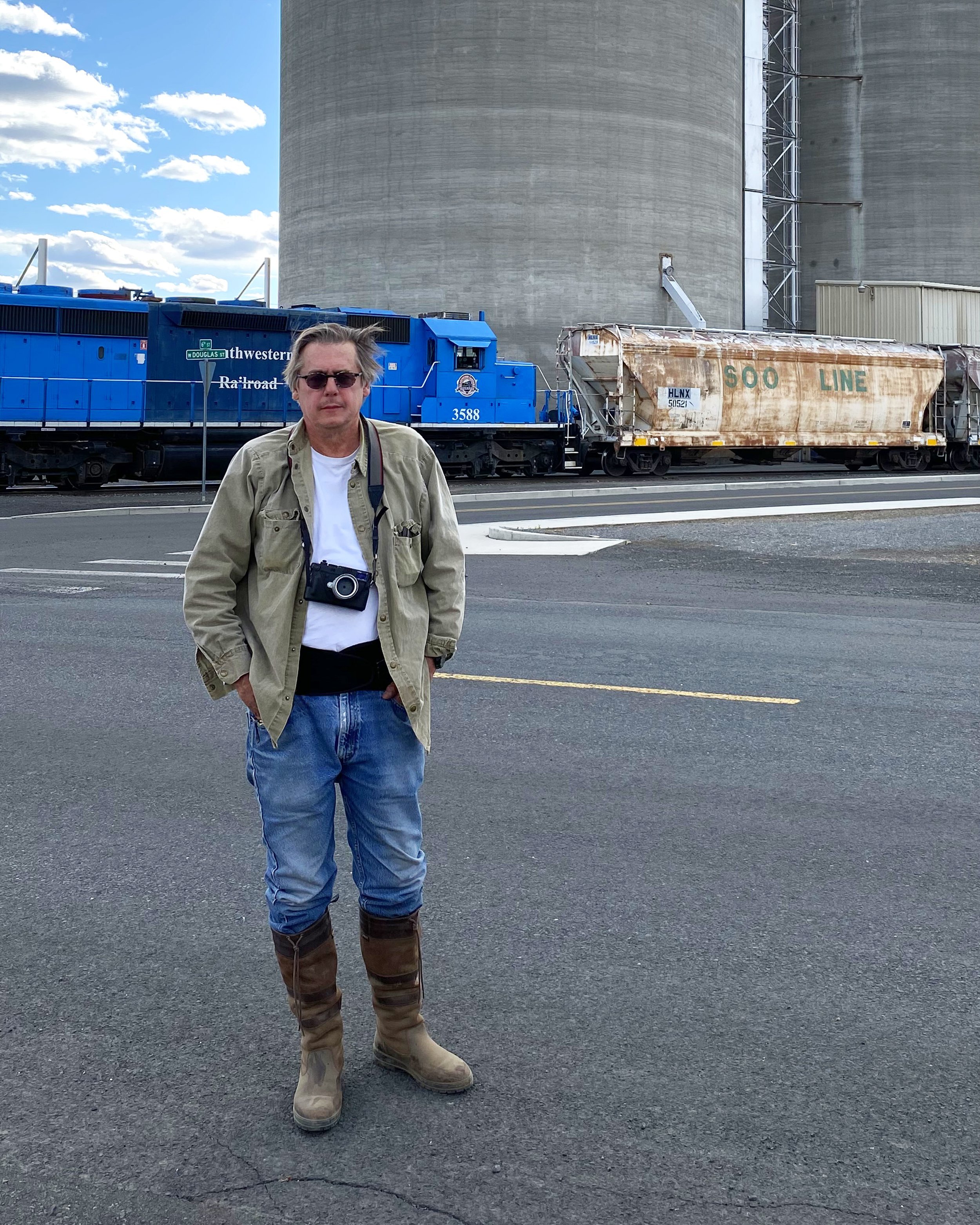Featured Photographer: Vincent Ricardel - "The Way Back"
“Kace poses for a portrait before he plows a field for planting."
© Vincent Ricardel
The first time I saw Vincent Ricardel’s series The Way Back, I was hesitant to place a time stamp on its creation date. The textured scenes of cowboys, ranches, and abandoned homesteads could have been taken directly from a historic archive of a way of life that has long since perished in most of the United States. I was pleasantly surprised to find that The Way Back was not an archival project, but instead, a 2021 documentary project of Douglass County, Washington.
Located approximately 200 miles east of Seattle, in a valley dwarfed by the Cascade Mountains, Douglas County exists in an arid climate not too different from what one would expect in Arizona. Originally settled in the late 1800s, this dry land scattered with abandoned homesteads is not a place frozen in time but an area steeped in generations of strong and sustainable agricultural communities that until now, have not been well documented. Ricardel’s images created with a Hasselblad 500 CM camera and 19+-year-old Kodak Black and White Verichrome Pan film have masterfully challenged the notion that there are no frontiers left in the American West.
“A Rancher walking his land at dusk."
© Vincent Ricardel
“An abandoned homestead from the early 20 Century, off Highway 2, Douglas County, Washington.”
© Vincent Ricardel
Before setting out to make The Way Back, Ricardel had been at a loss as to the ideal project for using his expired Verichrome Pan film. Though his career has spanned decades in the world of editorial and commercial photography working for publications such as W Magazine and The New York Times. After many years he was excited to have found a project to use this particular film stock which he anticipated would be ideal for the subject matter. Inspired by a chance meeting with a rancher from Washington State in 2020, the stories he heard about life raising cattle and growing crops in the back country of Douglas County immediately caught his attention along with the rancher’s genuine invitation to see it for himself. He shared with us, “It struck a deep chord within me as a good part of my childhood was spent on my grandparents’ farm in Southeastern Wisconsin. I never forgot that period in my life -- it was magical to me and a lifestyle with which I strongly identified in my formative years.”
“Four cowboys moving cattle in a dusty and heavy back lighted scene.”
© Vincent Ricardel
In May of 2021, Ricardel spontaneously followed up on the invitation to visit the Back To The Wall ranch and traveled to the rural backcountry of Douglas County for an intense 10-day excursion of exploring this frontier with the intent of channeling his experiences and memories of his childhood. As soon as he arrived, he immediately started to make images to establish the overall scene of the environment. As he interacted with the locals and relied on their guidance, he tagged along on cattle drives, land surveys, crop harvests, as well as those “off moments of daily life.” He commented “My days were long --14 hours, 5am - 8pm daily. Ranchers work hard. There is a great responsibility to sustain a ranch. Maintaining healthy livestock, harvesting crops, and the never-ending attention to the infrastructure that holds it all together are difficult to understand until one experiences the process first-hand.”
The most impressive aspect of Ricardel’s series is his ability to create such diverse and interesting images in such a short time period, that when edited down, actually feels complete. With just 10 days and 20 rolls of expired black and white film, his background as a photojournalist played an important role as he was constantly studying what was occurring before him and anticipating actions that may occur to ensure every shot counted. This challenge, combined with his risky bet to pair this project with 19+-year-old Kodak Black and White Verichrome Pan film, really paid off. The resulting grain and tone add a sense of mystery and timelessness to his compositions of rural landscapes that prompt the viewer to ponder about just when and where these scenes took place.
“A cowboy checks the perimeter of a temporary field corral as they move cattle to new pastures.”
© Vincent Ricardel
“Late afternoon sun over barren farmland. Douglas County, Washington.”
© Vincent Ricardel
When we asked him why he choose to use this film he said, “For years Verichrome Pan was one of my ‘go to’ Black & White film stock, and I had no idea at that time one of those bricks would remain unused until 2021. When I decided to use this remaining stock, I was uncertain how the images would turn out. The film was old and the light-sensitive qualities of the emulsion weakened with time. I was not deterred but determined to find a project commensurate with the qualities I anticipated would emerge from this aging film.”
Ultimately, The Way Back speaks to both the resiliency needed to survive in this geographically unique area and the love and commitment it takes to remain there. It succeeds in both documenting a unique way of life and creating a narrative of exploration and excitement around the struggles, rewards, and beauty of ranching life. They say a photograph is worth a thousand words but for Ricardel, he only needed a handful of images to write a compelling photographic novel. Please spend some time with and enjoy the rest of the images from his series below.
GALLERY
ABOUT THE ARTIST
Vincent Ricardel. In Coulee City, Washington.
Vincent Ricardel has photographed legendary artists and musicians, as well as global business and political leaders. He has created memorable portraits of His Holiness, the Dalai Lama, Paul Simon, and Les Paul, among many others. His career has spanned the editorial and commercial worlds of photography and has received numerous awards and has an extensive client list to include: Fortune, New York Times, Time, and W Magazine, to name a few. He has also contributed to many book projects including numerous book covers. His work is also syndicated worldwide through Getty Images. In recent years he has been exhibiting his personal and fine artwork.
ABOUT THE AUTHOR
Michael Behlen is an instant film addict and the founder and publisher of Analog Forever Magazine. For the last six years, Behlen has become an obsessive community organizer in the film photography world, including previously launching the independent publishing projects PRYME Magazine and PRYME Editions, two enterprises dedicated to the art of instant film. Through these endeavors, he has featured and published 250+ artists from around the globe via his print and online publications.
He has self-published two Polaroid photobooks -“Searching for Stillness, Vol. 1” and “I Was a Pioneer,” literally a boxed set of his instant film work. His latest book, Searching for Stillness Vol II was published in 2020 by Static Age. He has been published, been interviewed, and been reviewed in a quantity of magazines and online publications, from F-Stop and Blur Magazine to the Analog Talk Podcast. He loves the magic sensuality of instant film: its saturated, surreal colors; the unpredictability of the medium; its addictive qualities as you watch it develop. He spends his time shooting instant film and backpacking in the California wilderness, usually a combination of the two.
Connect with Michael Behlen on his Website and on Instagram!


























Analog Forever Magazine Edition 11 includes interviews with Robert Stivers, Chad Coombs, Binh Danh, and Susan Goldstein, accompanied by portfolio features of Amisha Kashyap, Vaune Trachtman, Montenez Lowery, Kayhan Jafar-Shaghaghi, Blake Burton, Michael Stenta, William Mark Sommer, and Beihua Guo.